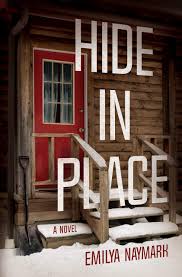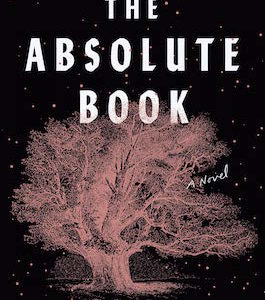My first encounter with the Russian mob occurred two-and-a-half years after the dissolution of the Soviet Union, in Istanbul. My new husband and I had traveled to Turkey and spent a week in a gloriously historic neighborhood, the Blue Mosque visible from our hotel windows. On our second night, we wandered across Galata Bridge, descended the steps to the waterfront, and chose a restaurant with a perfect view of the Golden Horn. Docked directly in front of this restaurant and sporting the tricolor Russian Federation flag floated a gigantic but peeling cruise ship, the name “Odessa” painted under a red star on its side. A single Russian family occupied nearly every table inside the restaurant—a man, his wife, his parents, her parents, multiple siblings, children, nieces, and nephews. They appeared to have been sitting for hours, the dishes before them already of the sweet and evening-snack variety.
We ate our kebabs while I tried to eavesdrop surreptitiously, even as we ourselves attracted quizzical glances. Back then, the only tattooed people in Russia were criminals, mostly men who had served time in Soviet prisons. Their tattoos, as in many underworld societies, had (still have) specific meanings. The reason we drew attention was that I was very obviously of Russian heritage and my husband, who could pass for Russian if he kept silent, had tattoos. As curious as we were about this party, so were they about us. Only when I got up to use the ladies’ did I realize everyone thought I was yet another Eastern European woman taking advantage of the newly opened borders to escape poverty and ply her wares on the shores of the Bosphorus, perhaps with her pimp. (A man followed me and made this assumption abundantly clear).
We stayed as late as we reasonably could, but the Russians were still eating. Much like a family on Thanksgiving who grows peckish a few hours after dinner, they requested fresh platters of kebobs and pilaf while their dolled-up children ran between the servers’ legs.
Throughout this entire evening, the family and various young men from neighboring tables paid homage to the man sitting at the head of the longest table. They asked him questions, and he would debate and answer. Then they’d drink a toast. Or they handed him something and he would pat them on the shoulder. Then they’d drink a toast.
Right before we called it a night, the man retrieved a softball-sized roll of US dollar bills, peeled off a couple hundreds and handed them to a waiter. The rest of the bills in that eye-popping roll were also hundreds.
Back in our hotel later that evening, I spotted two of the young men from the restaurant in the lobby, and the next night we bought them drinks, probing them for details. What we had witnessed would have been straight-up commerce in any capitalist country. But since the man with the wad of cash hailed from a county that only recently stopped punishing private enterprise with prison sentences, and still had no idea how to conduct itself capitalistically, the party we had inadvertently crashed was tied up with the criminal underworld. The young men confessed that their ultimate dream was to climb the mafia hierarchy and come to America.
Their cruise ship sailed from Odessa to Istanbul every few months, then the boss would send them and many others to buy everything in sight. Back in Russia, the cheap Turkish goods sold for huge profits. Russian money being worth nothing, this commerce was almost exclusively conducted in US dollars.
The reliance on dollars was not new and had evolved decades earlier when the black market began to flourish in the Soviet Union. Despite Stalin’s savage regime and the relentless hunt for “spekulants” (people who bought and sold goods on the black market), and “valuta” (foreign currency), absolutely everyone in the Soviet Union, at one point or another, bought or sold something on the black market. Even my father, who prided himself on being financially naïve, bought matzoh for us on the DL, because there was no other way to buy it. Other things that appeared in our household on the DL: bananas, caviar, pink patent-leather shoes for me, watercolor paints. There was probably more, but I was a child and not privy.
Private enterprise was underground yet universal in the USSR, often criminally organized, sometimes not. With an increase in foreign tourism in the 1950s, resourceful young men could be found circling tour groups, whispering, “For sale? For sale?” Anything a tourist had could translate into profit: blue jeans (of course), but also chewing gum, records, cassette tapes, books, shoes, underwear, cosmetics. Literally everything from the West was worth money. This buying and selling of all things foreign became known as “fartsa” (from “for sale”) and the men churning this commerce were called “fartsovschiks”. It was highly illegal, very dangerous, but the thrill was irresistible. It wasn’t just the money. It was the excitement of laying hands on a Beatles album or tasting a stick of Juicy Fruit. It wasn’t just that commerce itself was forbidden, but western music, food, clothes, magazines—for with those came foreign ideas. And those ideas proved deadly to a totalitarian state.
This underground commerce bubbled under the control of loosely connected criminal brotherhoods known as Bratvas. Regular citizens did their own bartering, but the more organized efforts belonged to Vors (Thieves), officially known as Vory v Zakone, or Thieves-In-Law. These Vors served time in prisons, received their specialized tattoos, and eventually were the cause for the bemused glances my husband received at a mob-dominated restaurant at the foot of Galata Bridge.
In the 1970s and ‘80s the Soviet Union relaxed its borders for citizens of non-Russian nationalities, resulting in a quarter of a million Jews rushing to leave while the leaving was good. An astonishing number of those immigrants settled in Brooklyn, in Brighton Beach, a community that had already been Jewish for half a century. I’ve read speculation that the Soviet Union opened its borders to rid itself of its criminal element, but plenty of criminals remained behind. A connection between the old world and new ensued, only to strengthen after the fall of communism in 1991.
Brighton Beach, or Little Odessa as it came to be known, very quickly birthed a robust criminal brotherhood of its own. Here, they were often of Jewish, Ukrainian, and Georgian descent, soon joined by men from the far-flung Soviet republics. Meanwhile, the disintegrated ex-Soviet state had many desirable commodities to sell and a power structure having more in common with the underworld than a First World democratic state should. Arms (including nuclear), planes, tanks, anything that wasn’t nailed down was soon for sale on the global black market.
The Vors were not at all averse to working with other criminal organizations. In 1997, a Vor nicknamed Tarzan plotted to sell a Soviet diesel submarine to a Colombian cartel for the purpose of smuggling cocaine. More recently, a 2017 racketeering case against the Shulaya gang out of Brighton Beach was so wide ranging in scope the indictment listed 33 defendants and spanned the continental US. The indictment details, among other things: violence, extortion, the operation of illegal gambling businesses, casino fraud, identity theft, credit card fraud, and trafficking of stolen goods. There is also prostitution, slot machine hacking, drug trafficking, a murder-for-hire plot, a plot to have a female member of the enterprise seduce victims, then chloroform (!) and rob them. They stole 10,000 lbs. of chocolate from container ships. Did I mention the kidnappings or the money laundering—using a fraudulent vodka export-import business (what else?).
Speaking of money laundering, I’ll end on one more personal experience. The last time I visited my family in Moscow, we had to exchange money. Being cautious Western tourists, we decided to do this at a bank. The bank was guarded by visibly armed men. When we finally made our way into the lobby, we were told that the bank would not take our dollars, though it would happily sell dollars to us for rubles at a laughably worthless rate. We gave up and descended into the metro, where pop-up kiosks exchanged money unofficially. There too, the clerk refused to accept our bills because some had markings or creases. Frustrated, we turned around, only to have the woman behind us in line shrug and say she’d buy our dollars because she would, quote, “have to give it to the gangsters, anyway.”
The Russian mob is local and global, multi-lingual, technologically advanced, but not against using low-tech, brutal techniques. Its members are atheist, Jewish, Muslim, and Christian, their culture a greater bond than their religious differences. As an organization, it has existed since the eighteenth century and has adapted and thrived through every historical upheaval.
As with all criminal organizations, it is filled with bad people doing awful things. But it’s the demented quality of their undertakings that makes it such outrageously great fiction fodder.
*


















